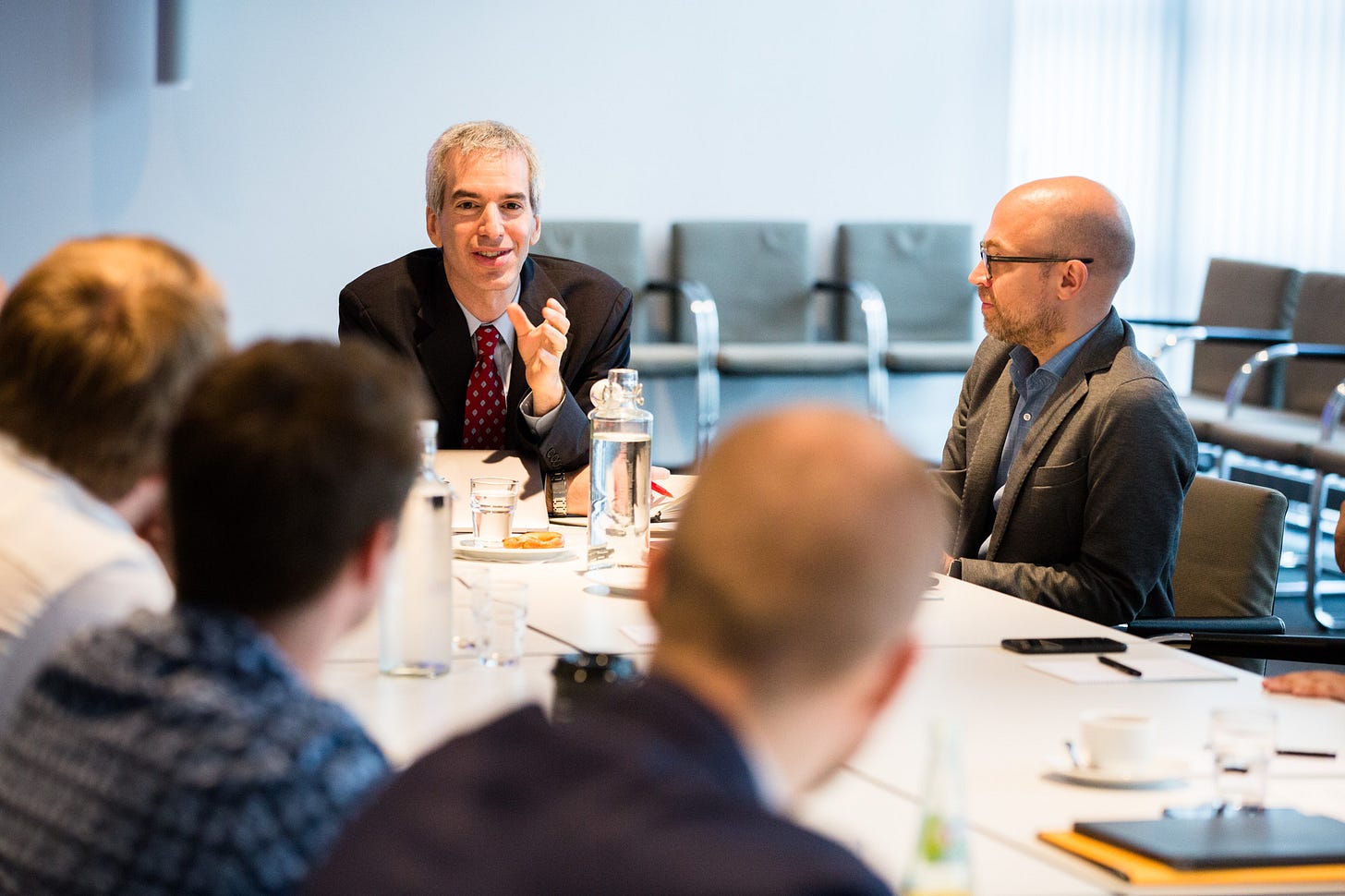AI in the Attention Economy: Friend, Foe, or Fix?
What newsrooms can do about algorithms, audience habits, and earning trust
You’re reading the Your News Biz newsletter. My goal is to help digital media entrepreneurs find viable business models.
Lately, it seems AI is either here to save us, replace us, or ruin everything. I’ve been thinking about how to help you sort the signal from the hype. Let’s go step by step.
I’ve been writing some articles on how new communications technologies have changed the course of civilizations. They also change us as humans — what we do, how we do it, how we treat each other. My first two posts were:

Since this newsletter’s goal is to ensure that trustworthy news producers thrive, I thought we should focus on how AI is transforming the media ecosystem we live in. So I’ll touch on:
— How we got here: the evolution of our media ecosystems
— 3 innovators suggest how AI can help
— AI and the attention economy problem: news avoiders
— Advice for countering news avoidance
How we got here
About 5,000 years ago, writing empowered an elite. It made the ability to read and write a pathway to knowledge and power. In the 15th century the printing press made it cheap and easy to spread knowledge. It democratized information and empowered a new literate class. No longer could the political and religious authorities control the message.
In the 19th century, mass media and mass consumerism emerged with newspapers, followed by radio and TV in the 20th. These became vehicles for persuading us to buy things and to support political movements.
Today we’re in the era of the internet and artificial intelligence, with infinite amounts of news and information available instantly, everywhere, all the time. We’ve entered the media attention economy. The medium is no longer just a message—it’s an ecosystem. Infinite content fragments our time and scatters our focus.
The currency of exchange — what has economic value — is the time and attention that people dedicate to news and information.
3 innovators suggest how AI can help
#1 I’ll start with Jeremy Caplan, who teaches at the Newmark Grad School of Journalism at CUNY and writes a weekly newsletter called Wonder Tools, which has 65,000 subscribers. His goal is to help us all use digital tools to be more efficient and effective. What I most like about Jeremy is that he takes a positive approach to AI: he shows you the best ways to use it while showing how to avoid the risks. Among his recent posts:
+++++
#2 Two years ago, a few months after the public release of ChatGPT, Joe Amditis of the Center for Cooperative Media at Montclair State University published a handbook with suggestions on how small, budget-constrained local media organizations could use the new tool.
Although much has happened in the past two years, I think his recommendations are still a great place to start:
He cautioned users about the potential for errors and “hallucinations,” or invented responses, in output from AI. Amditis also narrates, edits, and produces the audio version of WTF Just Happened Today?
+++++
#3 Ethan Mollick, a professor of management at the University of Pennsylvania’s Wharton School, shares One Useful Thing in his newsletter that often talks about AI. It comes monthly or slightly more often if he thinks of another useful thing.
A sample:
Using AI right now: a quick guide, which AIs to use, and how to use them
Making AI work: Leadership, Lab, and Crowd, a formula for AI in companies
Personality and Persuasion: Learning from Sycophants
No elephants: Breakthroughs in image generation, When Language Models Learn to See and Create
AI and the attention economy problem: news avoiders
Here’s the problem news organizations have: A large part of the public actively avoids them.

Final thoughts: 7 ways to counter news avoidance
Nic Newman has been the lead researcher on the Reuters Institute’s annual Digital News Report for more than a decade. He has tracked the impact of social media, mobile apps, podcasting, YouTube, artificial intelligence and more on the news and news consumers.
I’ll give Nic the last word. He recently retired from Reuters and wrote a kind of farewell with advice to journalists. I think it fits perfectly into my series on communication technologies.
In his Seven things journalists can do to counter news avoidance, he writes, “If the news is making so many of us anxious or confused, maybe there is a better way to create, package and deliver our product. But how to increase engagement without dumbing down?” Here are his recommendations, which I’ve reduced to bite size:
Keep it simple, brief, and useful. As journalists, we can be guilty of using overlong words or cramming too many details into our stories. (I would have called this farewell his “valedictory” but wanted to keep my language simple, per Nic)
Produce powerful and relatable human stories. Human stories can engage audiences and give a sense of purpose, even in the face of a story that might otherwise cause people to turn away.
Listen to audiences (and then act on it). Interview people who are disconnected from the news. Study user data. [Here he’s echoing the advice that Richard Gingras and Damian Radcliffe offered in my earlier posts in this series. — JB]
Take communities seriously and build diverse newsrooms. Building more diverse newsrooms is not just about equality but about reaching target groups that have previously avoided news publishers.
Create more engaging formats. Research shows many people find it hard to read long text articles, especially on a mobile phone. That’s why many young people embrace video or audio formats.
Rethink political coverage (constructively). Many feel that there is too much attention paid to shouty politicians and not enough to policy choices that face individuals and societies.
Look for solutions and hope. Solution-oriented approaches are particularly relevant in climate coverage. Often doom-laden narratives dominate that topic.
Good luck to you, Nic!
Next time: Some AI tools I’ve used and recommend.







